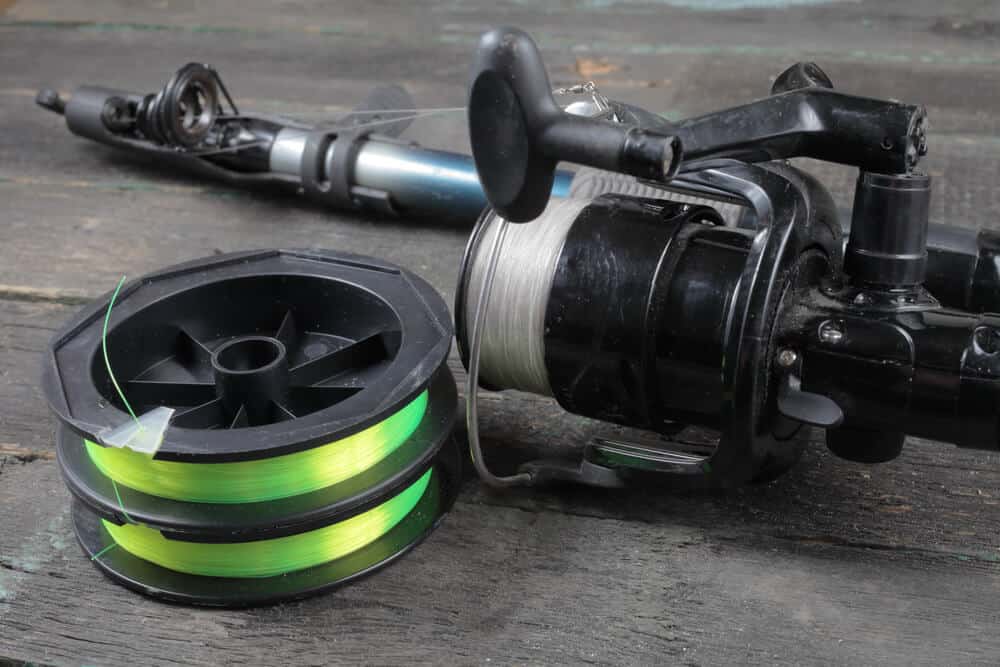Fishing line, usually made of nylon, is the backbone of any fishing trip. It’s also one of the most important parts of a fisherman’s tackle box or rod case. When you go to change your line, whether for freshness or because it has become damaged, there are some things you should know to make sure your next fishing day is as successful as possible.
It is a great tool to use in catching fish. It is a thin, round cord made from braided nylon or monofilament that is twisted into a line with a knot at one end and a lure on the other end. It can be used for all sorts of fishing needs- from catfish to large salmon fish. The best kind of fishing line to use is braided, fluorocarbon.
Purpose

It can be difficult to find the appropriate weight of fishing line for a particular job. Some lines are too heavy and don’t cast well on a rod, while others are too light and not as durable.
There are so many different brands of fishing line out there, all with different strengths and purposes. Not sure what to get? Here’s some advice on the best lines for beginners, as well as some helpful tips on how to change it as your skill level improves.
It is always good to have a few different types of fishing line in your tackle box, but there are many purposes that come into play when deciding on which one to use. For freshwater fishing, the most common type of fishing line is monofilament. For saltwater, a high-test braided line will be necessary for big fish and other items such as rocks and sea weed. The reason for this difference is due to the way freshwater hooks work.
Materials
Fishing line is the most important component of any fishing rod. The list of materials needed to put in fishing line are discussed below.
If you are not using monofilament or fluorocarbon, then you are using braided nylon cord which is made up of at least two smaller strands. The material used for braiding gives each different type of line a unique feel and performability.
Fishing is the act of catching fish with a fishing line. The lines are usually made from nylon, though fishing lines can also be made from steel, kevlar, or other materials. These materials are chosen based on what the fisherman intends to catch and how they intend to catch it. Nylon is great for all types of fish in most water conditions, but steel is better for catching sharks in saltwater.
Preparation
You should always inspect your fishing line before changing it. Prep work before changing your fishing line are described below.
It is important to check for any damage, such as nicks and cuts. You also want to make sure the line is not too old and dried up. Another important thing to know about fishing lines is that they can be made from many different materials
- nylon
- fluorocarbon, and
- monofilament
you want to match the right material for the type of fishing you’re doing.
How it works
Steps for using fishing line coiling tool, bending wire, and cutting old line
1) Tie end of fishing line to one end of the coil tool.
2) Wind on the other end of the coil tool onto reel.
3) Start wrapping fishing line around spool with desired number of coils.
4) When you are done, tie off the end of the coil,
5) leaving 10 inch tail-end of fishing line hanging off spool.
Tips and Tricks
Fishing line is something that can be changed out with regularity if it becomes damaged or frays. It’s also very good to change the type of fishing line that you use when hunting if you are not achieving the desired results. This way, you will know what type of fish your bait may be attracting and what type of fishing line would be best to use for that particular fish.
One of the important parts of fishing is learning how to change your fishing line. There are several tips and tricks that you can use to make this process easier. First, put on thick gloves so that you don’t have to deal with sticky hands, then hold the broken end of the line with one hand while using your thumb to grab the new end. Next, pull apart the two pieces, then tie a knot in one end before pulling it taut.
Final Note
Fishermen should be cautious when changing fishing line. It can be dangerous if done incorrectly and there are many different types of fishing lines with various uses and strengths.
The individual fisherman will need to decide what type of fishing line best suits his needs depending on the type of fish he is catching, the time of year, the environment, etc. The most important thing to remember is that one should make sure to store unused fishing line safely away from children or pets, because it could pose a choking hazard.

